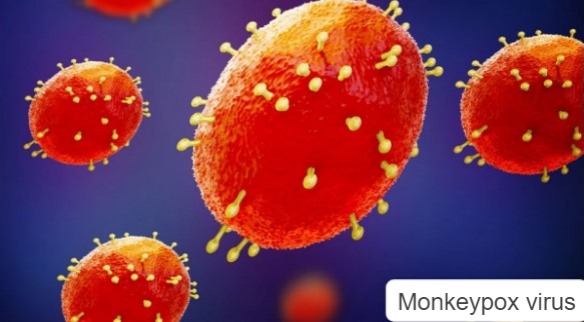Monkeypox symptoms,preventive measures and treatment
On 13 May 2022, two laboratories in the United Kingdom confirmed a possible case of monkeypox virus in the same house, which the British government immediately notified the World Health Organization. On May 15, four more laboratories confirmed new cases with pustules on the body. As of May 22, 2022, 111 such cases had been confirmed in Europe and America.
 |
| Monkeypox symptoms,preventive measures and treatment |
What is monkeypox?
It is a disease caused by infection with monkeypox virus. The monkeypox virus was first discovered in 1958, when an outbreak broke out in a colony of monkeys kept for research purposes, hence the name monkeypox.
The first case of monkeypox in humans was recorded in 1970 in the Republic of Congo, when emergency efforts were being made to control a smallpox outbreak there. Outside of Africa, the infection spreads through human travel or imported animals, and so far the virus has been reported in the UK, USA, Canada, Israel and Singapore.
What is Monkeypox 2022?
The Centers for Disease Control and Prevention (CDC), a public health agency in the United States, is investigating a case in collaboration with the Massachusetts Department of Public Health, in which a person who returned to the United States from Canada contracted monkeypox on May 18. Confirmed.
The CDC is also looking for places around the world where monkeypox cases were reported in early to mid-May and where monkeypox virus is not normally found, including Europe and North America included.
According to the CDC, it's not yet clear how people in certain areas of the country got the infection, but after clinical research on infected patients, the disease has so far only affected men. and it is men who were victims of sexism.
However, the CDC has warned health care providers and specialists in the United States to monitor patients presenting with skin rashes, regardless of gender, and to confirm this through laboratory tests. Make sure to check if they are suffering from monkey pox.
Earlier, the CDC and the Maryland Department of Health confirmed a monkeypox infection in a person who returned to the United States from Nigeria on November 16, 2021. The CDC is encouraging local health officials, the travel industry and other partners to help it identify people with skin rashes or rashes.
The CDC is also more concerned because a person infected with monkeypox begins to show symptoms 21 days later, meaning that there is a large three-week gap between infection and the onset of symptoms. Hundreds of people may come in contact with the person and they too may become victims of this infection.
Symptoms of Monkeypox
In humans, the symptoms of monkeypox are similar to those of smallpox, but less severe. Early symptoms of monkeypox include fever, headache, muscle aches, and fatigue. Monkey pox differs from small pox in that it causes swelling of the body and blisters, while small pox does not.
Within one to three days (sometimes longer) of the above initial symptoms, the affected patient develops a pustular rash, often beginning on the face and then gradually Spread over the whole body. In infected patients, the disease may last for two to four weeks. One in ten people infected with monkeypox in Africa die.
Symptoms of Monkeypox
A person spreads a monkeypox infection when they come into contact with a person, animal, or object that is infected with the virus. The virus enters the body through broken skin (even if it is not visible), the respiratory tract, or salivary membranes such as the eyes, nose, and mouth. The spread of this virus from an animal to a human can be through scratching, cooking meat or any fluid from the animal.
Most of the spread of this infection from person to person is through invisible respiratory drops. Respiratory droplets usually cannot travel more than a few feet, requiring two people to be face-to-face and close to each other for extended periods of time. Additionally, the virus can be spread by touching an infected person's fluids or used clothing.
Preventive measures for monkeypox
The following precautions can be taken to stay safe from monkeypox virus:
* Staying away from animals suspected of carrying the monkeypox virus, including sick and dead animals.
* Stay away from all people and things that have come in contact with infected animals.
* Isolate affected people.
* After coming in contact with infected people, take special care of cleanliness and wash hands under running water with soap and use sanitizer.
Read more..What are natural antibiotics and how they work?
* Use personal protective equipment when treating infected patients.
Monkeypox treatment
There is currently no specific treatment for monkeypox virus. However, the CDC recommends the smallpox vaccine, antiviral medications, and specific injections to prevent the disease.








0 Comments